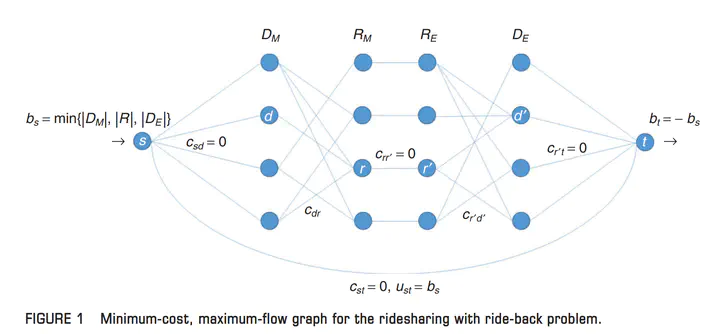Peer-to-peer ridesharing with ride-back on high-occupancy-vehicle lanes: Toward a practical alternative mode for daily commuting

Abstract
This paper presents a matching and pricing mechanism for a peer-to-peer ridesharing system that ensures a ride-back for matched riders. This service is thus presented as an alternative to driving alone for daily commuting. The matching algorithm is formulated as a minimum-cost, maximum-flow problem that is exact and quickly solvable on polynomial time. The mechanism modeling is based on the Vickrey-Clarke-Groves (VCG) mechanism that is known to be efficient, incentive compatible, and individually rational. However, VCG runs on a budget deficit in a ridesharing setting. To address this issue, participants were classified into drivers and riders in accordance with a novel multiparameter reserve price that fixes the revenue shortage problem and makes the system financially self-sustainable but in detriment of no longer being efficient. Agents utility functions include cost-sharing savings and high-occupancy vehicle (HOV) travel time savings. The parametric study uses origin-destination demand data from the Southern California Association of Governments, and travel times are extracted from a professional web mapping service. Results show the method has a revenue surplus over most of the reserve-price parameter space and offers high matching rates attributable to the inclusion of HOV travel time savings and reserve price structure. The reserve prices are drawn from empirical distributions of value of time and unit distance cost.